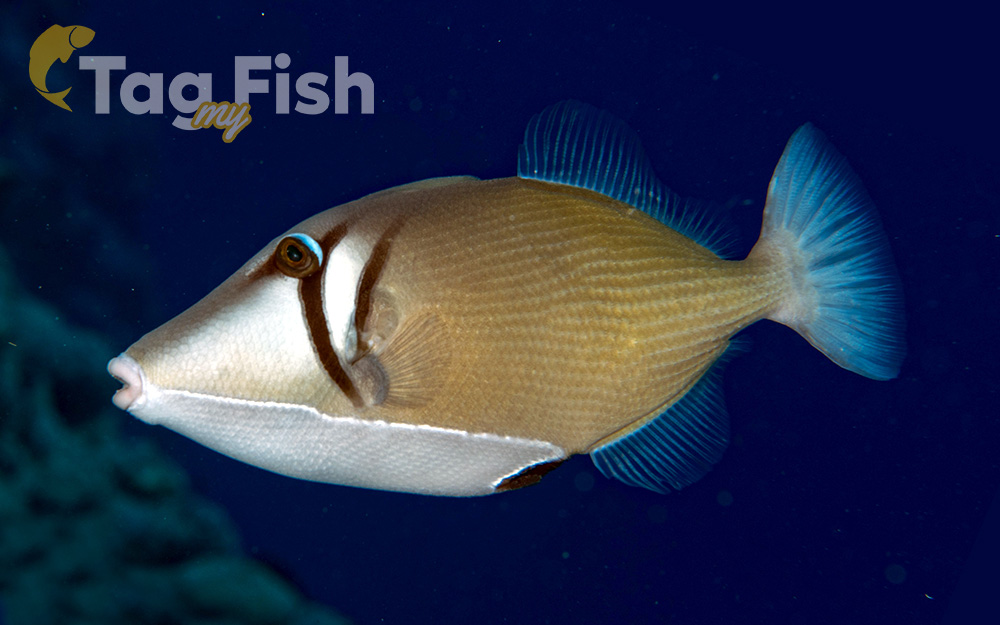Boomerang triggerfish
(Sufflamen bursa)

Classification
General data
Sufflamen bursa, sometimes known as Lei Triggerfish, bursa triggerfish, scythe triggerfish or boomerang triggerfish, is a triggerfish from the Indo-Pacific. Its name is derived from the two markings behind its eyes that wrap around the fish similar to a Hawaiian Lei. The color of these markings changes depending on the fish mood, in which case the colors may alter from yellow, dark brown, and black. It is a species of reef fish found in reef ecosystems in the Indo-Pacific, including Japan, Australia, and Hawaii. It occasionally makes its way into the aquarium trade.
The Lei Triggerfish shares a similar body plan as other triggerfish species in the Balistidae Family, which include a rectangular body, pectoral, anal, caudal, dorsal and pelvic fins; and a toothy snout that is more reminiscent of a beak.
It grows to a size of 25 cm in length.
The Lei Triggerfish is generally pale, but it can change to a darker color, typically a shade of brown with hints of purple on the anal, ventral, and caudal fins. A single white strip runs down from its mouth to the base of its pectoral fin while two stripes, which are either brown or yellow depending on the mood of the fish, run down vertically. One stripe goes through the eye and the other behind the eye along the gills on either side.
Similar to other triggerfish species, they have locked spines at the base of their caudal fin which they use as a weapon of self-defense against predators. Although it isn’t unheard of that these fish use their spines when provoked. Like their relatives in the Balistidae Family, they have tough teeth that somewhat resemble a beak. Lei Triggerfish have tiny barbs on their scales which repel urchin spines, making them impervious to their venom.
The Lei Triggerfish inhabits regions of a coral reef before a surge zone as to avoid the chaos and general dissonance within the water where waves crash. This species lives in warm shallow waters with sandy and reefy bottoms. In the presence of a predator, they hide in reef crevices and do this especially at night. They inhabit a variety of different reef systems across tropical and subtropical regions of the Pacific and Indo-Pacific.












